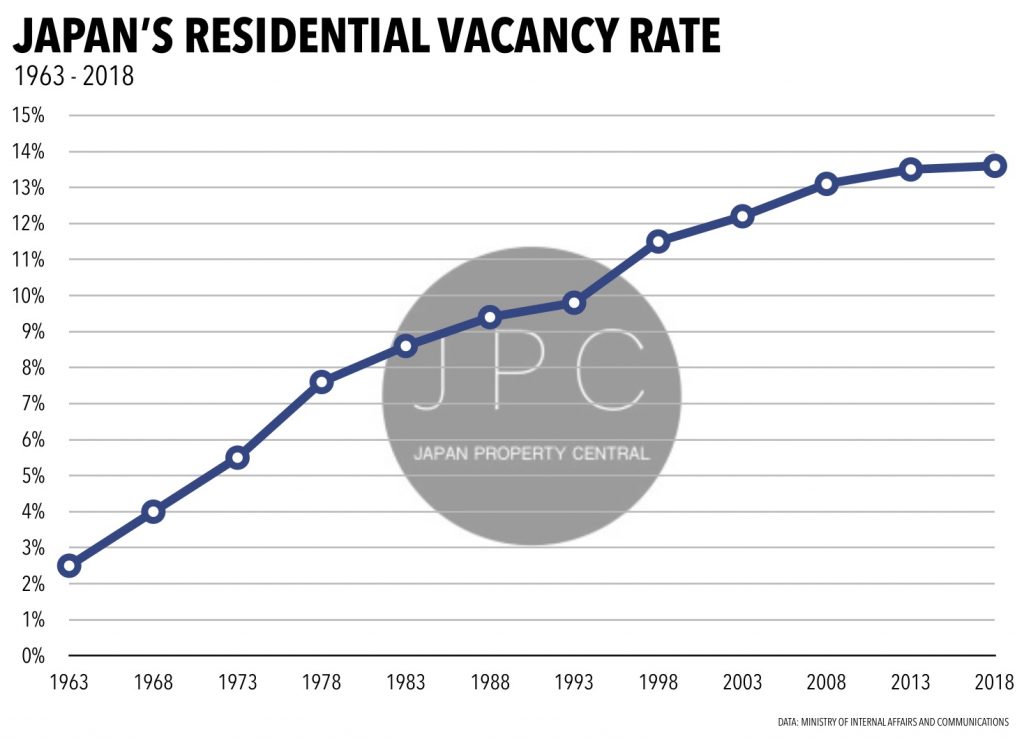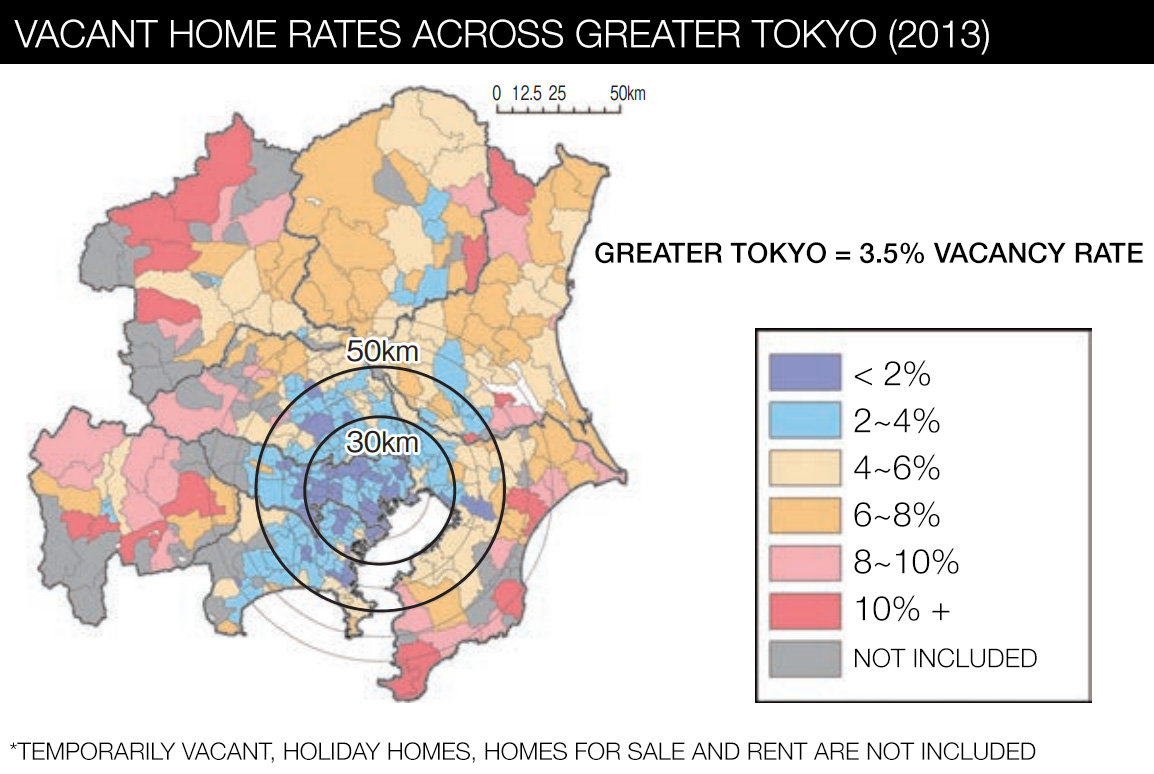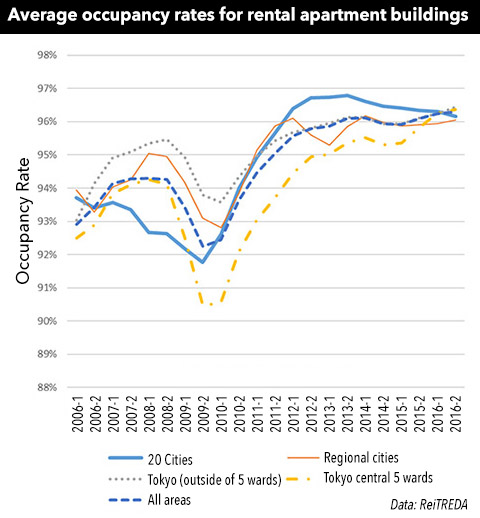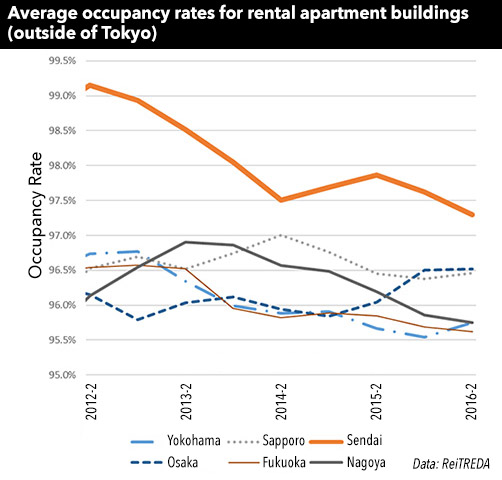Japan's vacant house ratio reaches 13.6%

On April 26, the Ministry of Internal Affairs and Communications released their housing and land data as of October 2018. This survey is carried out once every five years. According to the report, the nationwide residential vacancy rate was 13.6%, a 0.1 point increase from 2013. The total number of vacant homes across Japan reached 8,460,000, an increase of 260,000 homes over the past 5 years.
Vacant home rate in central Tokyo at 2% or lower

The Ministry of Land, Infrastructure, Transport and Tourism (MLIT) released their 2018 White Paper on Land for the Greater Tokyo Area on June 8. This year’s report covered the growing problem of vacant homes.
The vacant home issue in Japan refers to unused, idle homes and land in Japan and it is important not to confuse it with rental vacancy rates.
Vacant homes across Greater Tokyo have increased by 43% over the 10 years to 2013, with Ibaraki, Tochigi, Gunma and Yamanashi prefectures seeing a 62% increase, and Saitama, Chiba and Kanagawa seeing a 52% increase. Tokyo saw a 7% increase.Read more
Apartment occupancy rates reach record high in Japan

The average occupancy rate of rental apartment buildings acquired by J-REITs has been steadily improving since 2010 and has exceeded levels last seen during the peak in 2008. In the second half of 2016 the average occupancy rate was 96%, a record high.
This is due both to an improving property market and REITS acquiring relatively new buildings in prime, central locations. While occupancy rates remain high in Tokyo, other cities across the country are seeing a reversal with a declining trend evident since 2013.
Trends in cities other than Tokyo:
- Sapporo: Although occupancy levels are relatively high, they have been decreasing since late 2014.
- Sendai: Occupancy rates reached record highs due to housing demand following the Tohoku disaster in 2011, but have been slowly falling. Sendai has seen the highest decline of all cities.
- Yokohama: Occupancy has been falling since mid-2013, although there was an improvement in the second half of 2016.
- Nagoya: Occupancy rates have been falling since 2013 and are sitting at a comparatively low level.
- Osaka: Occupancy rates have been improving since late 2015 and are at a relatively high level.
- Fukuoka: Occupancy rates have been steadily falling. The rate of decline has been influenced by a building with an occupancy rate of less than 80%.

*Central Tokyo 5 wards: Chiyoda, Chuo, Minato, Shinjuku, Shibuya.
Source: Mizuho Real Estate Market Report, July 14, 2017.
